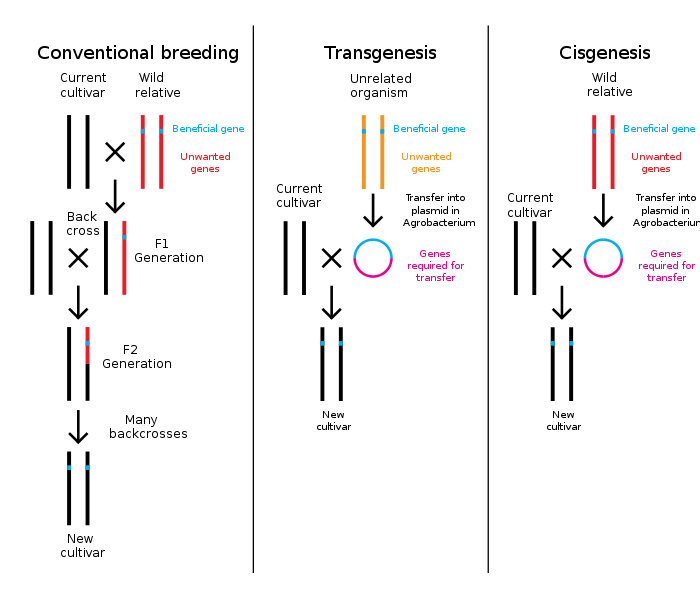
Transgenesis
Encyclopedia

Transgene
A transgene is a gene or genetic material that has been transferred naturally or by any of a number of genetic engineering techniques from one organism to another....
– into a living organism so that the organism will exhibit a new property and transmit that property to its offspring
Offspring
In biology, offspring is the product of reproduction, of a new organism produced by one or more parents.Collective offspring may be known as a brood or progeny in a more general way...
. Transgenesis can be facilitated by liposomes, plasmid vectors, viral vector
Viral vector
Viral vectors are a tool commonly used by molecular biologists to deliver genetic material into cells. This process can be performed inside a living organism or in cell culture . Viruses have evolved specialized molecular mechanisms to efficiently transport their genomes inside the cells they infect...
s, pronuclear injection, protoplast fusion, and ballistic DNA injection
Gene gun
A gene gun or a biolistic particle delivery system, originally designed for plant transformation, is a device for injecting cells with genetic information. The payload is an elemental particle of a heavy metal coated with plasmid DNA...
.
Transgenic organisms are able to express foreign genes because the genetic code
Genetic code
The genetic code is the set of rules by which information encoded in genetic material is translated into proteins by living cells....
is similar for all organisms. This means that a specific DNA sequence
DNA sequence
The sequence or primary structure of a nucleic acid is the composition of atoms that make up the nucleic acid and the chemical bonds that bond those atoms. Because nucleic acids, such as DNA and RNA, are unbranched polymers, this specification is equivalent to specifying the sequence of...
will code for the same protein
Protein
Proteins are biochemical compounds consisting of one or more polypeptides typically folded into a globular or fibrous form, facilitating a biological function. A polypeptide is a single linear polymer chain of amino acids bonded together by peptide bonds between the carboxyl and amino groups of...
in all organisms.
Using plasmids from bacteria
The plasmidPlasmid
In microbiology and genetics, a plasmid is a DNA molecule that is separate from, and can replicate independently of, the chromosomal DNA. They are double-stranded and, in many cases, circular...
DNA is cut using restriction enzyme
Restriction enzyme
A Restriction Enzyme is an enzyme that cuts double-stranded DNA at specific recognition nucleotide sequences known as restriction sites. Such enzymes, found in bacteria and archaea, are thought to have evolved to provide a defense mechanism against invading viruses...
s, while the DNA to be copied is also cut with the same restriction enzyme, producing sticky-ends. This allows the foreign DNA to hybridise with the plasmid DNA and be sealed by DNA ligase enzyme
Enzyme
Enzymes are proteins that catalyze chemical reactions. In enzymatic reactions, the molecules at the beginning of the process, called substrates, are converted into different molecules, called products. Almost all chemical reactions in a biological cell need enzymes in order to occur at rates...
.

